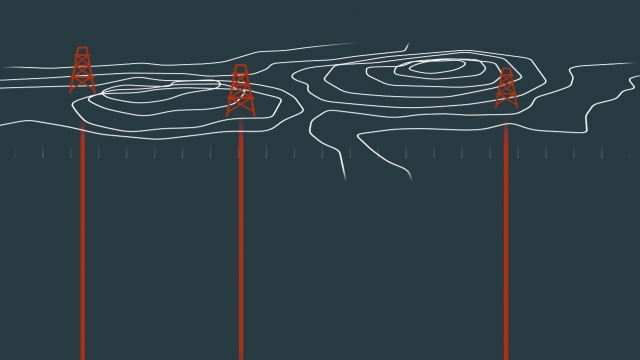As if it weren't already incredible that fracking can lead to earthquakes, scientists are now learning it can actually make the surface swell and bulge — through more than a mile of solid rock.
But that's not necessarily bad news. In fact, the discovery might help make fracking safer. Researchers looking at wastewater injection sites in Texas say they watched how the ground swelled to forecast where earthquakes were most likely.
SEE MORE: In Light Of The Oklahoma Earthquake, Here's What Fracking Is and Isn't
From 2007-2010, satellites showed the ground under some wastewater wells rose by as much as 3 mm per year. From March to August 2014, the ground rose by as much as 5 mm in certain places.
If that doesn't seem like a big change, remember that we're talking about more than a mile of rock getting pushed up. The researchers say that takes huge amounts of pressure — more than enough to cause earthquakes, depending on the type of rock.
The satellite imagery directly tied wastewater injection to a magnitude 4.8 earthquake that rattled the region in 2012.
The good news is detecting this swelling could help forecast which areas are more prone to earthquakes. The lead researcher says his team's findings could be guidelines for regulators and oil companies, lowering the risk of aggravating any nearby faults.


